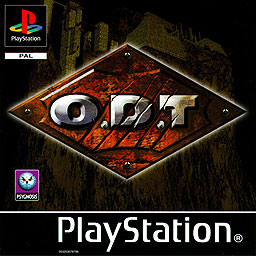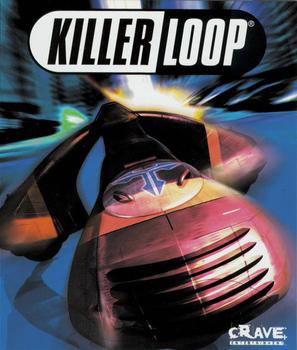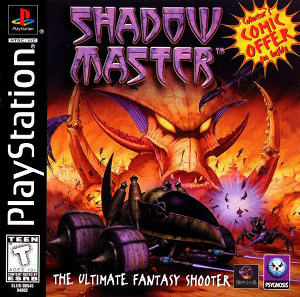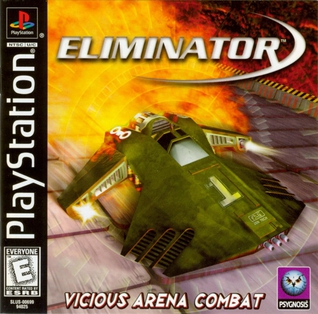
Darkstone: Evil Reigns is an action role-playing video game developed by Delphine Software International for Microsoft Windows and PlayStation. In 2014, the French publisher Anuman Interactive launched a remake available on iPad, iPhone and Android, with the cooperation of the original game's author Paul Cuisset.

Ultima IX: Ascension is a 1999 role-playing video game developed by Origin Systems and published by Electronic Arts for Microsoft Windows. It is the ninth and final main installment of the Ultima series.

Surreal Software was an American video game developer based in Kirkland, Washington, and a subsidiary of Warner Bros. Interactive Entertainment, known for The Lord of the Rings: The Fellowship of the Ring, The Suffering and Drakan series. Surreal Software employed over 130 designers, artists, and programmers. Surreal was acquired by Warner Bros. Games during the bankruptcy of Midway Games in July 2009. After a significant layoff in January 2011, the remaining employees were integrated into WBG's Kirkland offices, along with developers Monolith and Snowblind.

Formula One 99 is a racing video game developed by Studio 33 and published by Psygnosis for PlayStation and Microsoft Windows. Sony Computer Entertainment released the game in Europe on the PlayStation. It is the sequel to the 1998 video game Formula 1 98 and was based on the 1999 Formula One World Championship.

O.D.T. is a 1998 action-adventure video game developed by FDI and published by Psygnosis for PlayStation and Microsoft Windows.

Overboard! is a top-down adventure game, released by Psygnosis for the PlayStation and Microsoft Windows in 1997. It employs a light-hearted, all-ages piratical theme. A relatively low-key release for Psygnosis, the game was met with mixed reviews.

Frogger 2: Swampy's Revenge is an action video game developed by Blitz Games and published by Hasbro Interactive for the PlayStation, Game Boy Color, Microsoft Windows, and Dreamcast. The game is part of the Frogger series, and the sequel to the 1997 remake of Frogger, featuring similar 4-way movement gameplay in a 3D world and 6 different environments. Unlike its predecessor, Frogger 2 features a choice of different characters to play with in the game, several multiplayer modes, and an in-game storyline. A Nintendo 64 port of the game was planned, but was later cancelled.

Drakan: The Ancients' Gates is a 2002 action-adventure video game developed by Surreal Software and published by Sony Computer Entertainment for the PlayStation 2. It is the sequel to Surreal Software's 1999 Windows game Drakan: Order of the Flame. which was published by SCE subsidiary Psygnosis. The game's name comes from the eponymous Ancients' Gates, which are the central focus of the story.

Wipeout 3 is a 1999 futuristic-themed racing video game developed by Psygnosis exclusively for the PlayStation. It is the fourth game in the Wipeout series, following Wipeout 64 (1998), and the third on PlayStation following Wipeout 2097 (1996). Players control anti-gravity ships and use weapons to force other contenders out of the race.

G-Police is a 1997 combat flight simulation video game developed and published by Psygnosis for PlayStation and Microsoft Windows.

Lands of Lore III is a 1999 action role-playing game developed by Westwood Studios and published by Electronic Arts. It is a sequel to Lands of Lore: Guardians of Destiny and the third game overall in the Lands of Lore video game series. The game set uses a first person perspective with a hack and slash combat system, and it features four "guilds" that the player may join to determine what quests the player will complete. Lands of Lore III was first announced in February 1998, and it received mixed reviews after release.

Psybadek is a video game for the PlayStation console. It was designed and released by Psygnosis on November 17, 1998. The game was sponsored by shoe company Vans.

Slave Zero is a 1999 action video game developed and published by Infogrames North America.

Draconus: Cult of the Wyrm, known in Europe as Dragon's Blood, is a hack and slash video game developed by Treyarch and published by Crave Entertainment for the Dreamcast game console. Draconus is considered as a spiritual sequel to Treyarch's swordfighting PC game Die by the Sword.

Adventure Pinball: Forgotten Island is a pinball video game released in 2001 by Electronic Arts for Microsoft Windows.

Killer Loop is a futuristic racing game released in 1999-2000. It was developed by VCC Entertainment and published by Crave Entertainment.

Sinistar: Unleashed is a 1999 action space shooter video game for Microsoft Windows. It was designed by Marc Michalik and Walter Wright and developed at GameFX, a small studio composed of former members of Looking Glass Studios. Originally titled Out of the Void, development of the project began in 1997 and had no relationship with the Sinistar franchise. After licensing the franchise from Midway Games that year, GameFX shifted the focus of the game and developed it as a sequel to the original Sinistar, which was released by Williams in 1982.

Shadow Master is a video game developed by HammerHead and published by Psygnosis for the PlayStation and Microsoft Windows. It is a first-person shooter in which the player character rides in an armed vehicle. It met with predominantly negative reviews which praised its visuals but criticized it for clunky controls and poorly designed, frustrating gameplay.

Pro 18 World Tour Golf is a video game developed by Intelligent Games and published by Psygnosis for Microsoft Windows and PlayStation in 1999.

Eliminator is a shooter game developed by Magenta Software and published by Psygnosis for PlayStation and Microsoft Windows in 1998–1999.


















